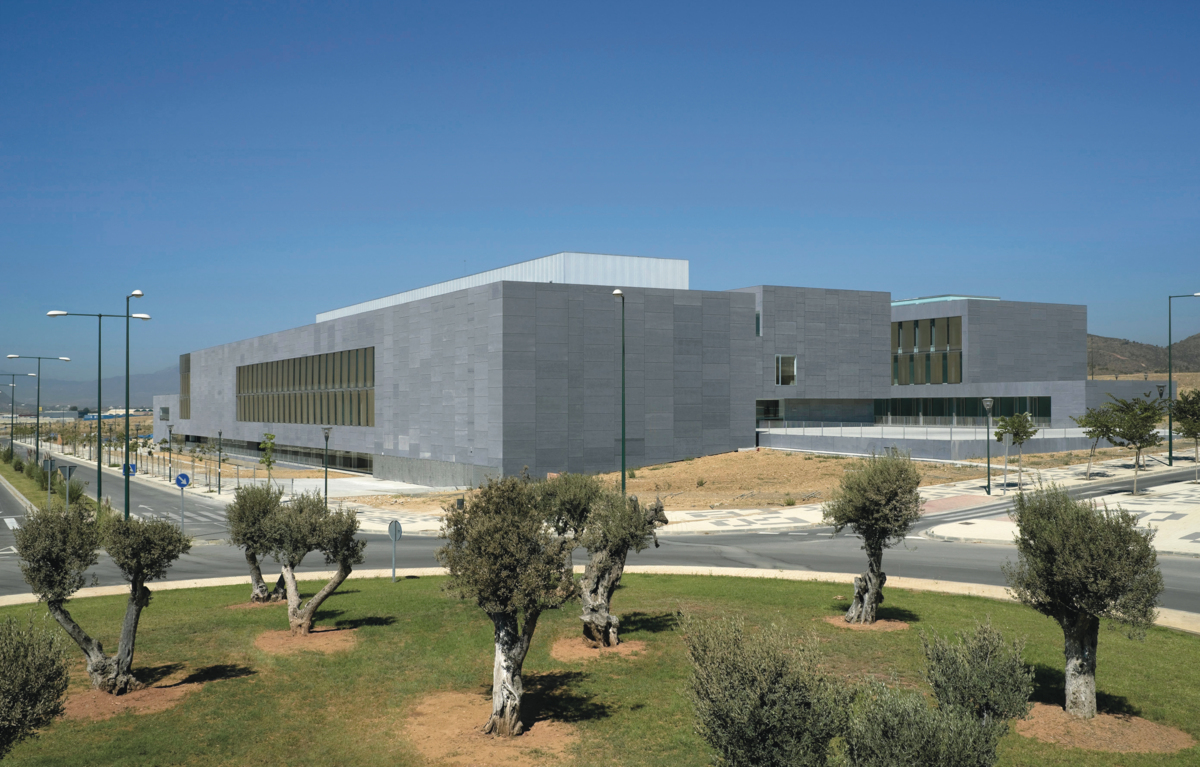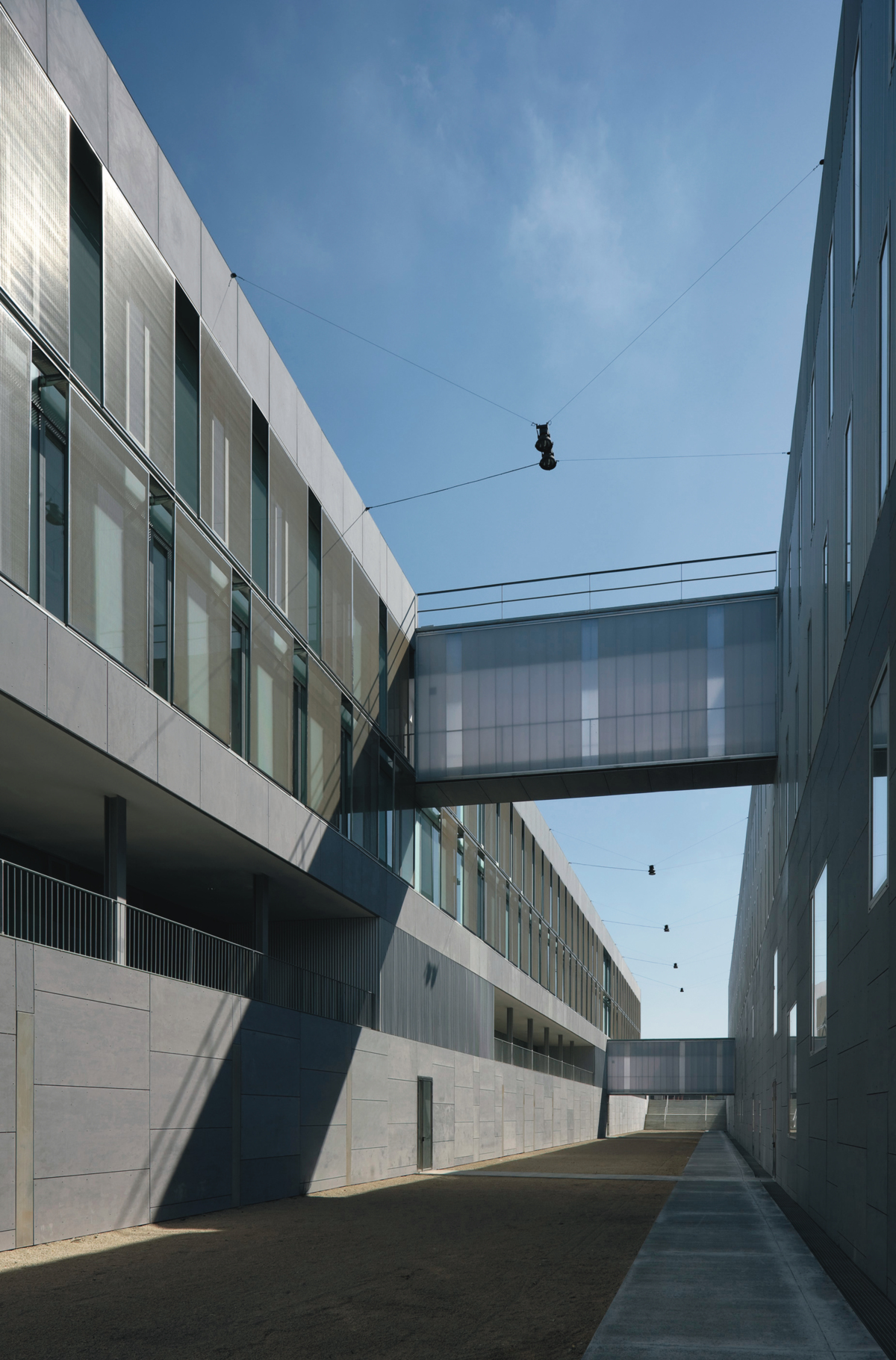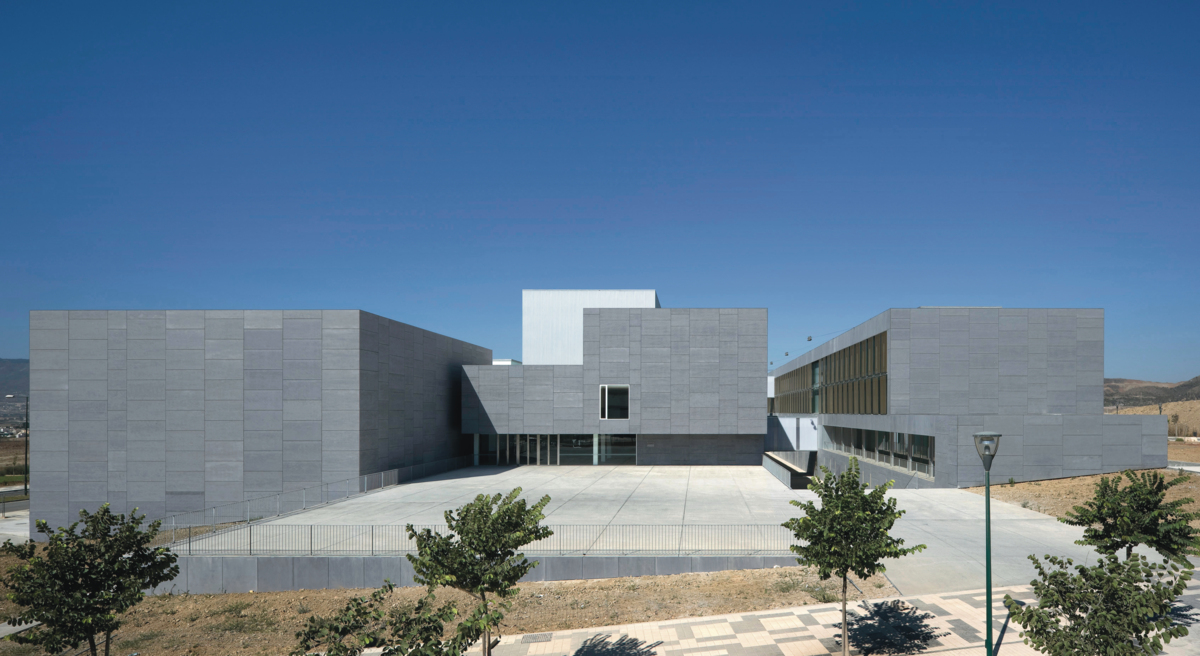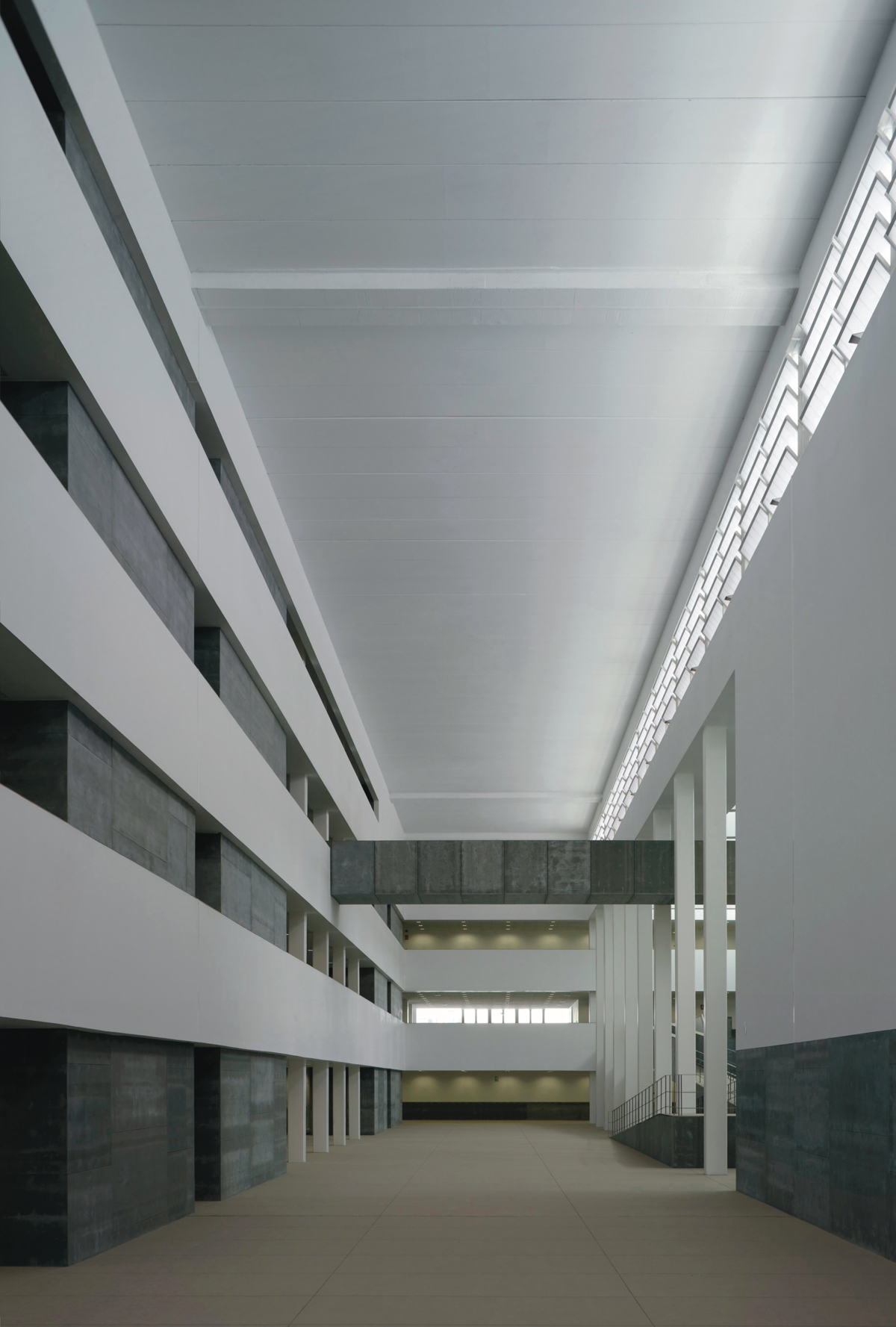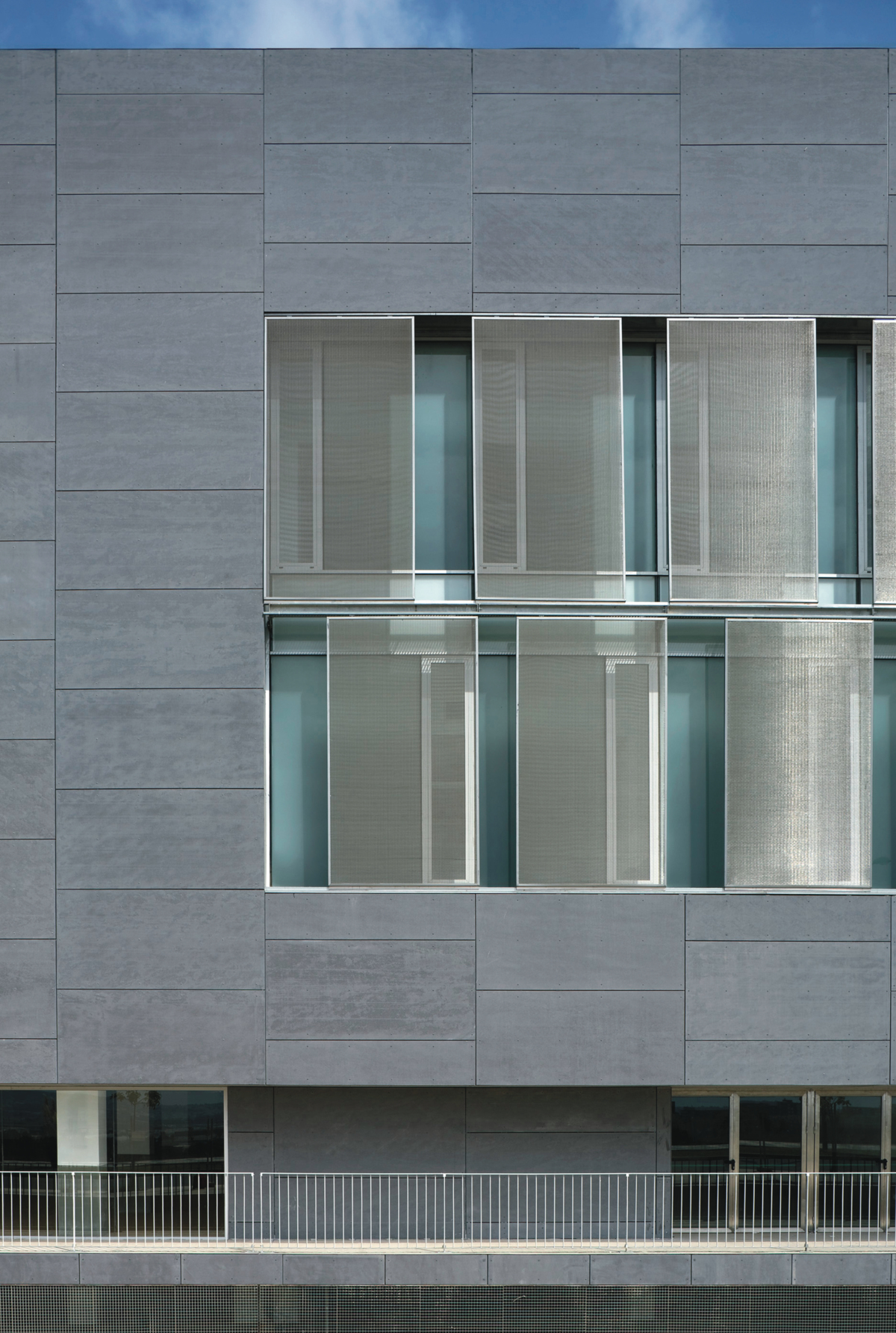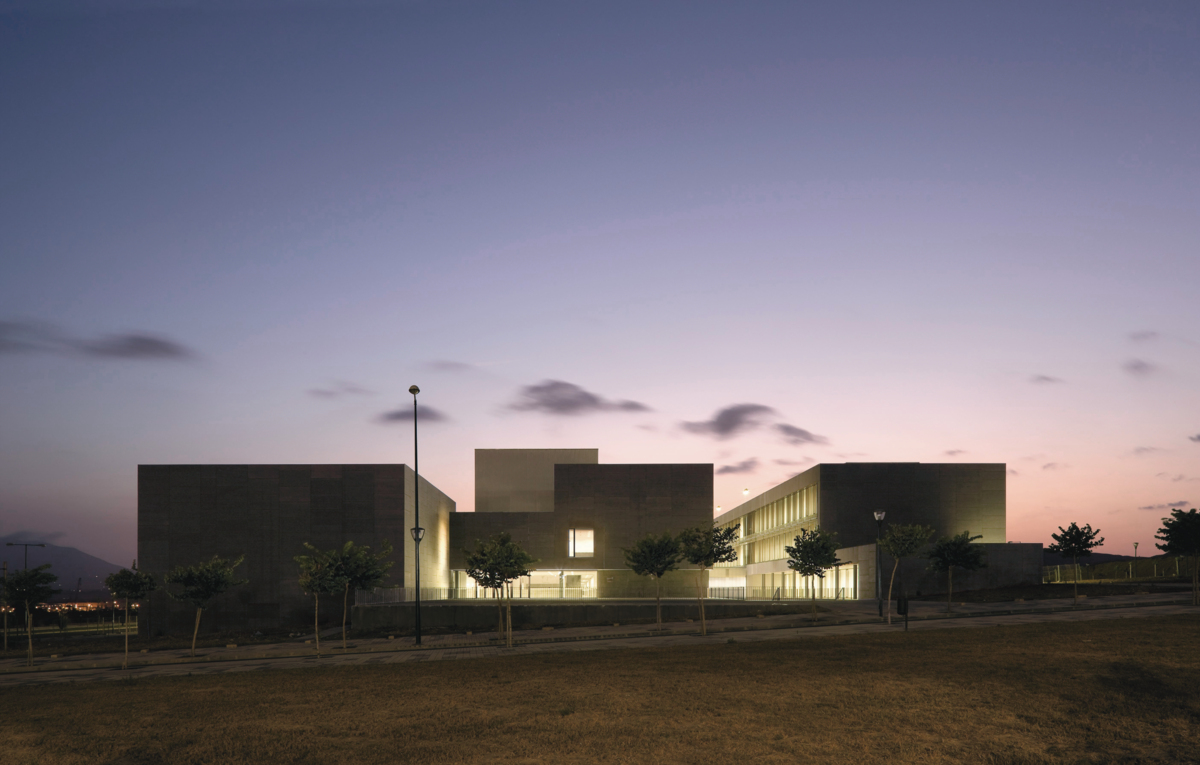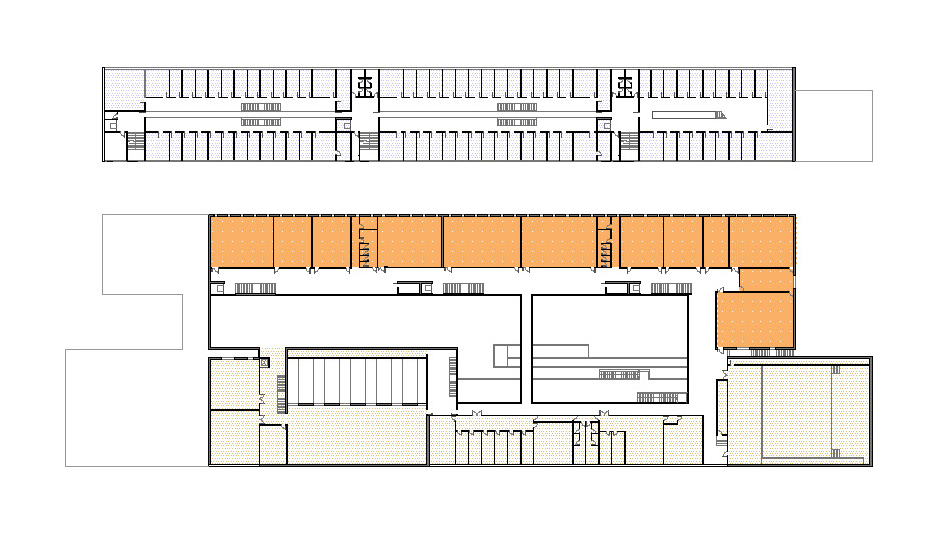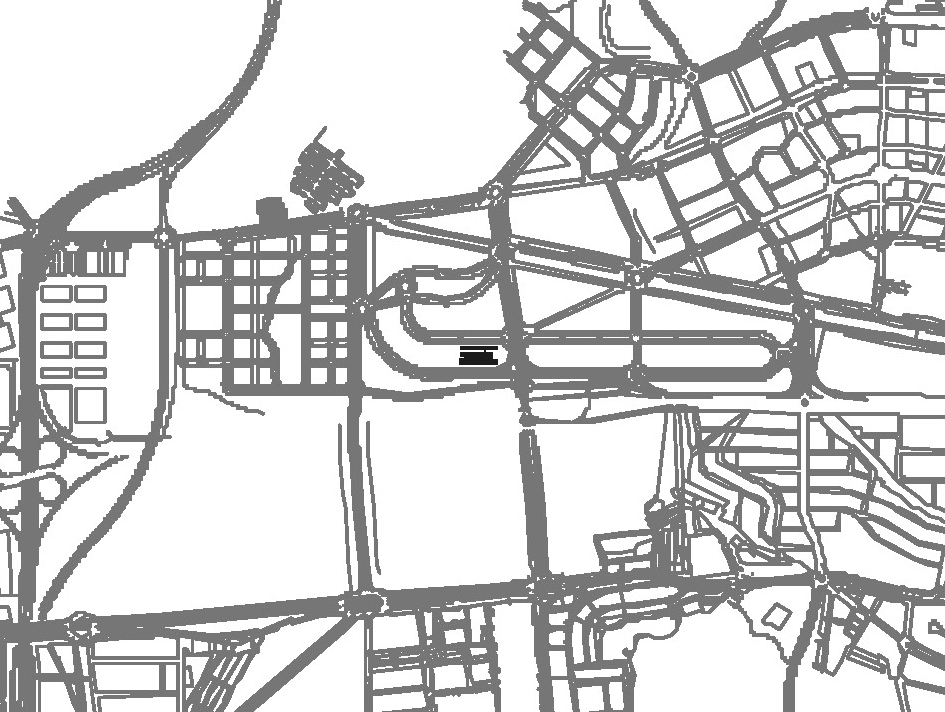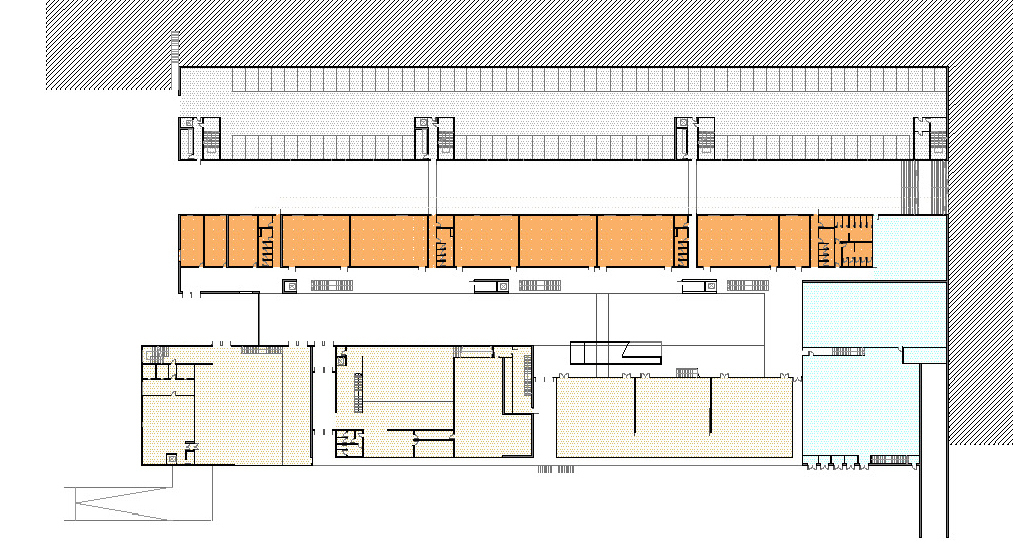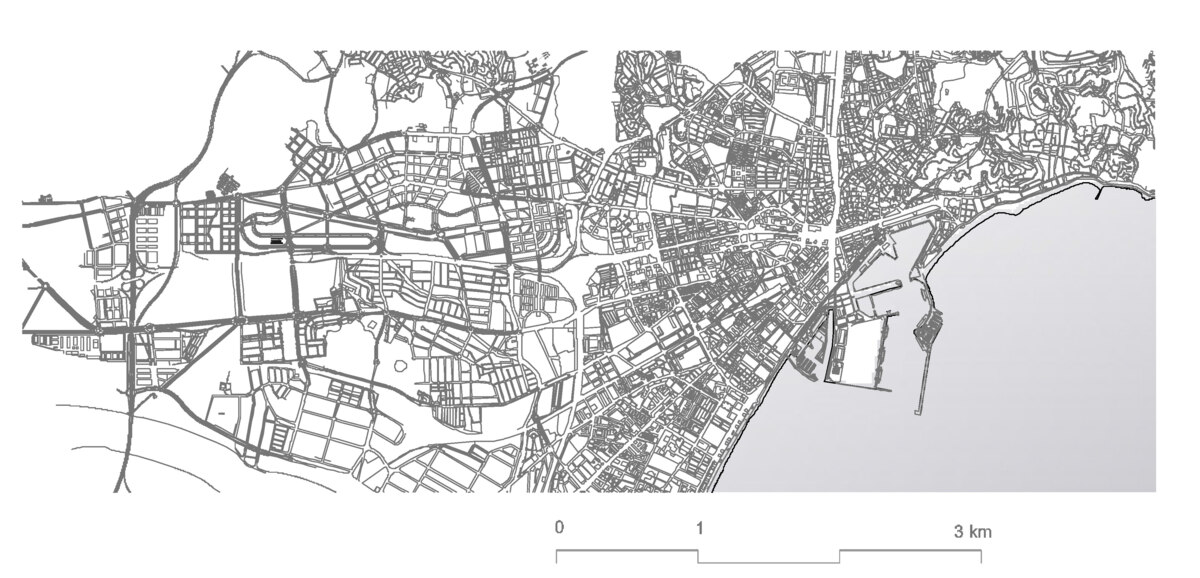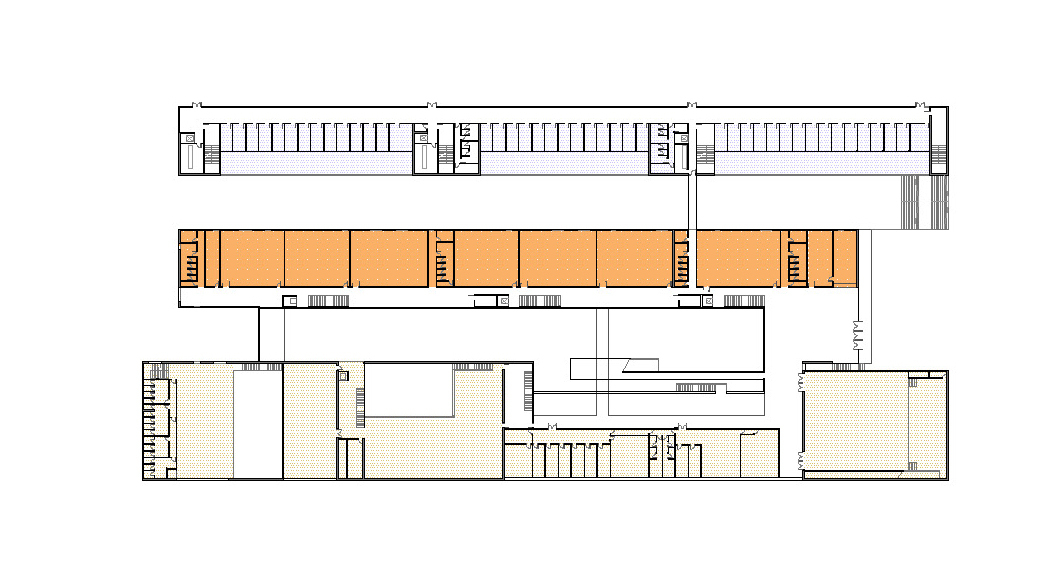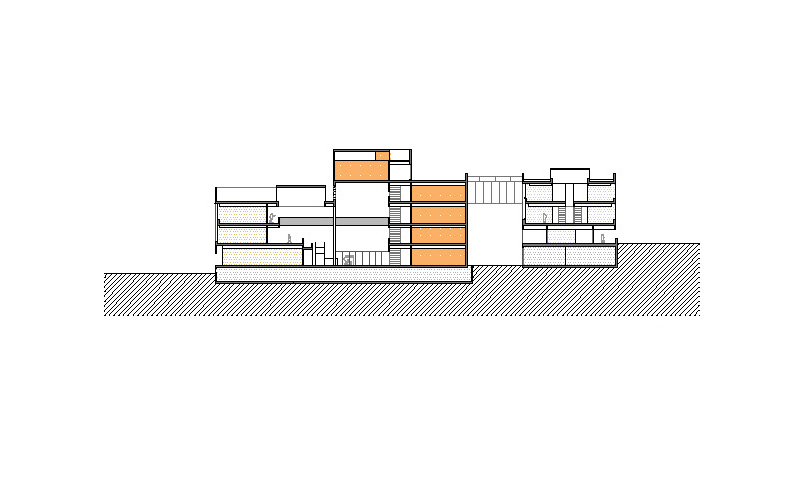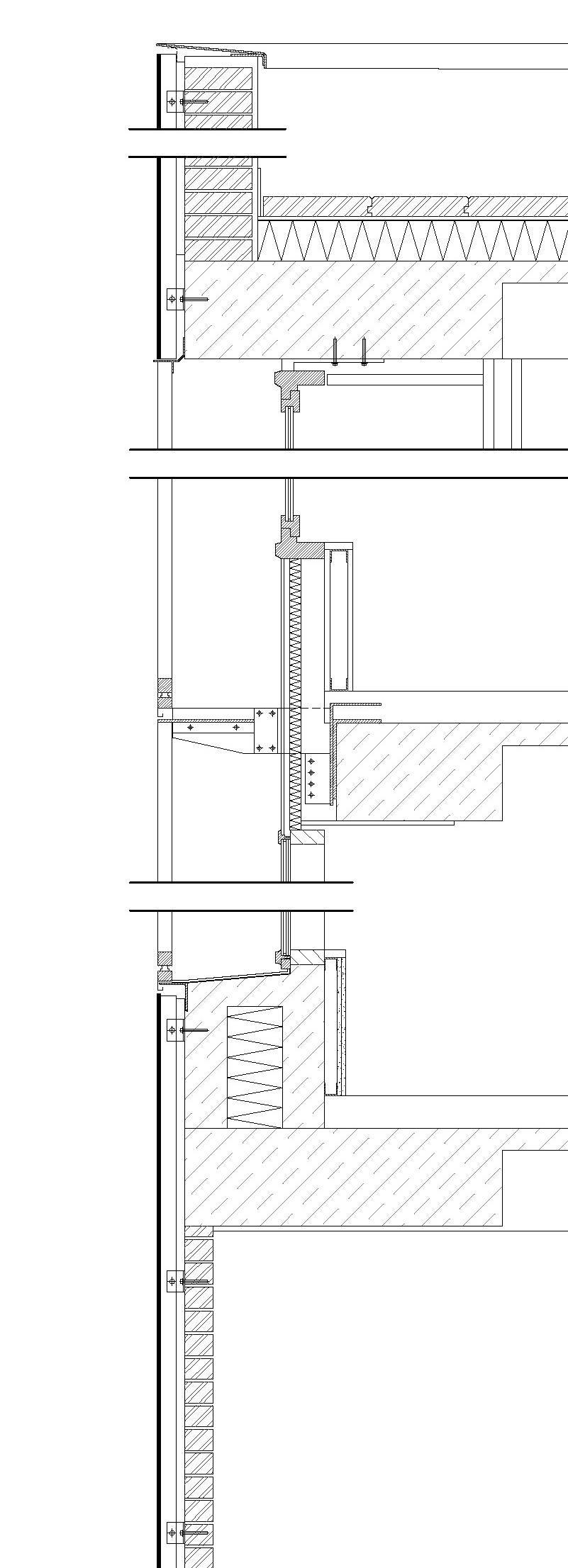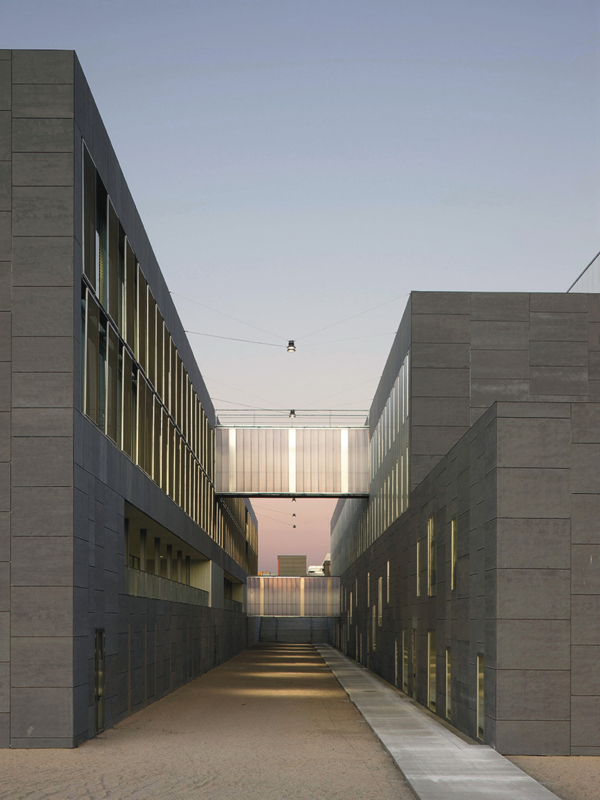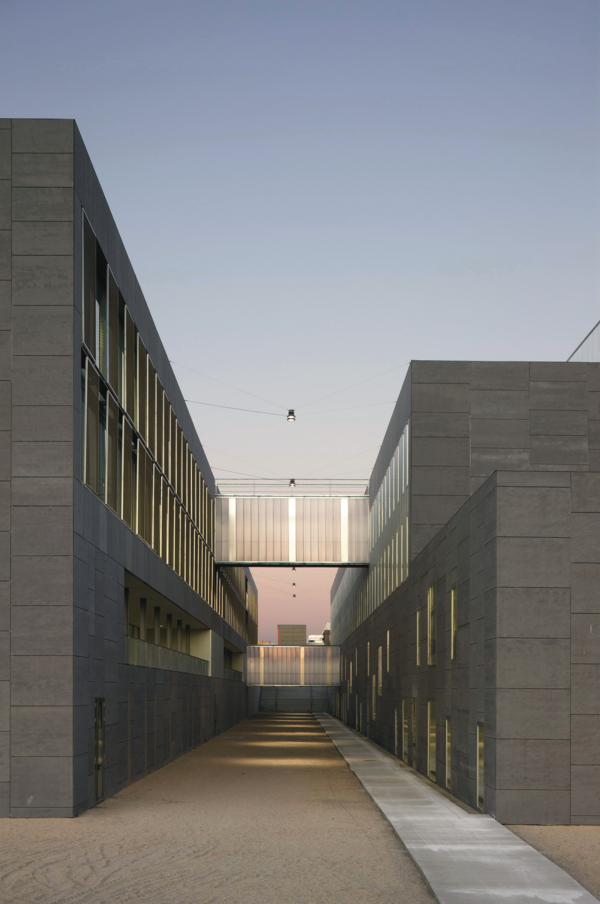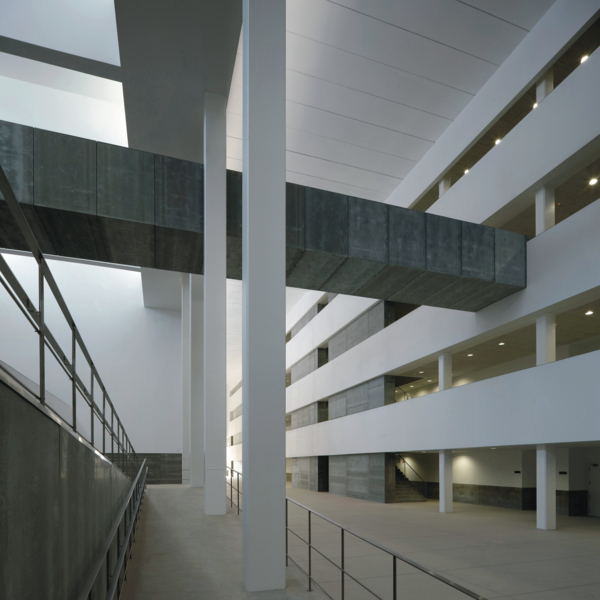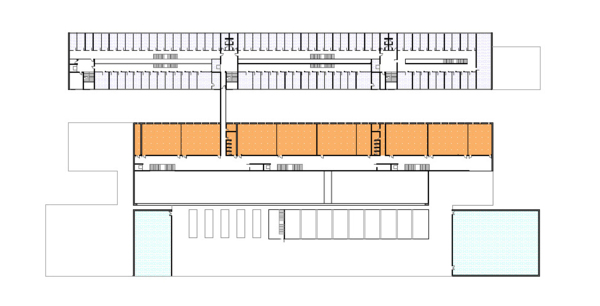UNIVERSITY BUILDING IN MALAGA
Project details
- City
- Málaga
- Project Type
- New Construction
- Building Type
- School
- Application Type
- Facade
- Architect
- Luis Machuca y Asociados Arquitectos
- Photographer
- Duccio Malagamba
Project description
This new building, which presents itself as straightforward and permeable, stands in a new outlying district of the city of Málaga. Well-connected to the public tram network and close to a motorway junction, the faculties of economics and social sciences have been given a new home here.
The schedule of the accommodation required was sizable, which led the architects to see the building as an urban planning project. They decided to place three striking rectangular volumes parallel to each other so that streets and squares could be made between them. The two buildings that house the main functions, such as lecture halls, library, cafeteria, and administration, are entered from the main “street”, which is roofed by classrooms and therefore offers protection from wind and weather. The third volume to the north is reserved for the institutes and stands along the second parallel route, whose character is shaped by two volumes in the form of bridges.
The extremely bright light in this region led the planners to design the building as light-absorbing monolithic structures, which also helped to preserve the geometric clarity of the design. The volumes are structured by grey fibre cement panels cut into rectangles, in some areas mounted horizontally, in others vertically. The horizontal panels dominate, underlining the horizontality of the design. The grey colour of the fibre cement panels fits naturally into the surroundings, the bronze-coloured sunshade elements are a reference to the sandy ground.
Through its own light sources the building creates an extremely reduced, almost archaic atmosphere that offers protection and yet remains permeable.
The three long volumes were subdivided according to functions and were placed at right angles to the sloping site. The northern building that houses the university institutes offers the greatest degree of privacy but remains linked to the others by transverse connections. The southern buildings are accessed from a main “street” and represent the heart of the complex. The upper floors and the rooms that are open to the public are accessed by ramps and stairs.
At dusk, the building seems almost to vanish into its surroundings, were it not for the lights in the north-facing offices. The contrast between the light-absorbing fibre cement panels and the bright light sources underlines the shape of the individual building volumes.
The bright light during the day reveals the fine structure of the fibre cement panels, which run flush into the shade elements that are mounted in front of the metal windows. The main “street” is an impressive internal space, its character shaped by bridges, columns, ramps, and the visual relationships between the different floors. Through the mostly white walls this space contrasts strongly with the design of the exterior.

Published in A+D 55, Spring 2021


